Arts & Entertainment
The predictable predictability of the Oscars
Favoring middle-of-the-road prestige over edgier fare
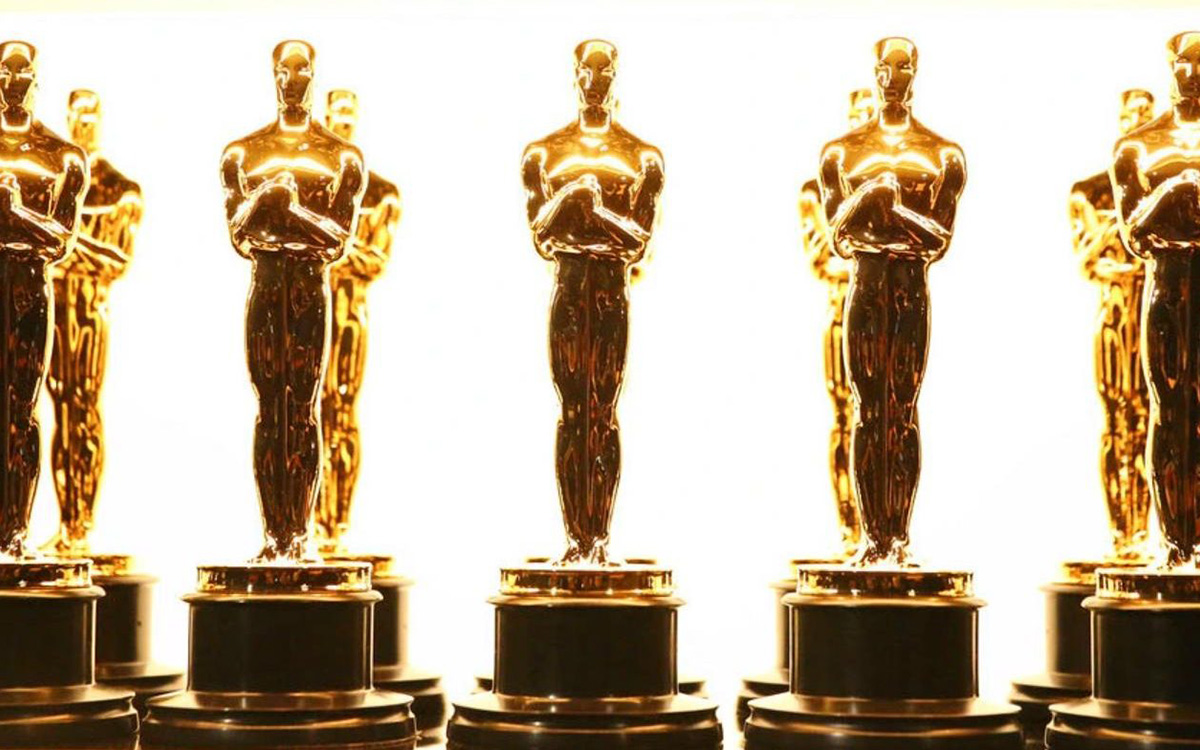
It’s hard to write a reaction piece about the Oscars when you recognize that the Oscars, by their very nature, are essentially a poll – or perhaps, more aptly, a popularity contest – which reflects an aggregate of personal opinions, and therefore have as much to do with internal Hollywood politics as with rewarding artistic excellence.
I’m not saying that the movies and people being celebrated on the stage at the Dolby Theater in Hollywood Sunday night – all of them, winners and nominees alike – didn’t deserve to be there; on the contrary, 2023 was an outstanding year for cinema, and every one of the contenders could be considered worthy of taking the prize. If that’s the case, however, how can any of these outcomes be determined without the influence of personal taste? Making movies is not like playing sports, where a win results from the highest number of points scored and goals blocked; there is no such handily objective criteria to rely on in picking an actor, a screenwriter, or an entire film to proclaim as the “best” in its respective category, and it’s inevitable that Academy voters will be influenced by personal bias when they make their choices on that final ballot.
While Sunday’s 96th annual Oscar ceremony, which offered the usual snubs and oversights and no real surprises, might have disappointed me or even occasionally sparked a glimmer of outrage, I cannot fairly say that any of the final results were “mistakes.” And though it may be oversimplifying things to say that being offended by the Academy’s final choices is akin to being angry that someone else’s favorite flavor of ice cream is chocolate when yours is salted caramel praline, it’s still enough to convince me that my “reaction” piece to the Academy Awards can really only ever be an “opinion” piece,
With that in mind, here we go.
The presentation itself was the usual blend of witty repartee (mostly provided with success by veteran Oscar host Jimmy Kimmel, though attempts at it from the various presenters ran the gamut from delightful to disastrous), musical performances (Billie Eilish and brother Finneas O’Connell’s rendition of “What Was I Made For?”, which went on to win the evening’s only award for “Barbie”, was a particular highlight, alongside the more lavish and deliciously amusing dance production number headed by Supporting Actor nominee Ryan Gosling for “I’m Just Ken” from the same film), uplifting moments (a regal Rita Moreno’s benedictory introduction of “Barbie” Supporting Actress nominee America Ferrera brought tears to my eyes, and I suspect I wasn’t alone), and show-stopping surprises (John Cena’s teasingly faux nudity presenting the Best Costume Design award was a memorable stunt, to put it mildly, as was the combination of Arnold Schwarzenegger and Danny DeVito to do the honors in the Visual Effects and Film Editing categories) – yet it also had more than its fair share of embarrassing gaffes, such as upstaging the “In Memoriam” segment with an overblown production number accompanied by father-and-son operatic crooners Andrea and Matteo Bocelli’s duet of “Con tu partirò”, a move that has fueled perhaps more post-Oscars outrage than anything else from this year’s ceremony.
As for the politics, there were the expected barbs making fun of easy conservative targets, but most of the speeches avoided invoking too much progressive fury. The one overtly political moment came with the win of UK director Jonathan Glazer’s “The Zone of Interest” for Best International Feature, when he read, in prayerlike monotone, a pre-prepared statement warning against the dehumanizing hate depicted in his slice-of-Nazi-life historical drama and calling for empathy for the targets of such hate on both sides of the current crisis in Gaza. It was met with backlash, of course, especially after a partial quote in Variety omitted key elements of the speech and led many to believe the Jewish filmmaker was refuting his own religion.
As for the winners of the awards themselves (you can find the full list on the Oscar website) the evening’s choices fell more or less in line with my predictions – though not necessarily my preferences.
The domination of “Oppenheimer” in most of the major categories in which it competed was, for anyone following the pre-ceremony buzz, a foregone conclusion. Few doubted that Cillian Murphy would handily claim the Best Actor prize – thwarting nominee Colman Domingo (“Rustin”) from becoming the first queer actor to win for playing a queer character in the process – or that Christopher Nolan would take the Best Director category, and from there the win for Best Picture felt as inevitable as anything can be at the Oscars.
Equally inevitable was the evening’s most easily predicted “Oppenheimer” win, as veteran Hollywood player Robert Downey, Jr. ebulliently swaggered onstage amid the enthusiastic familial cheers of his peers to claim the Best Supporting Actor prize; his acceptance speech, in which he self-deprecatingly recalled the legal and professional obstacles arising from the substance abuse that nearly derailed his early career, became a testament to overcoming personal setbacks to achieve an even higher success, something that resonated in the words of several other of the evening’s winners.
In the categories where “Oppenheimer” didn’t win, the odds were already in favor of the eventual victors, such as first-time filmmaker Cord Jefferson, whose “American Fiction” earned him the Best Adapted Screenplay Award over fellow front runners like “Barbie” and “Poor Things,” and Da’Vine Joy Randolph, whose winning Supporting Actress turn in “The Holdovers” had been a juggernaut throughout the award season.
Many Oscar fans, though most accepted the predestination of “Oppenheimer” as the year’s big winner, might rather have seen a different candidate come out on top (my own choice, for what it’s worth, would have been “Barbie,” with “Poor Things” and “Zone of Interest” coming up close behind); but even if Nolan’s weighty and technically dazzling biopic was unquestionably a fine film, exploring a deeply disturbing slice of not-too-distant history that still casts a long existential shadow over our world today, it’s impossible for me not to see in its multiple wins an all-too-familiar pattern of “safe” choices.
While “Oppenheimer” might pique ethical discussions over its title character’s choice to build the atomic bomb, few would find controversy in the idea that the destruction unleashed on the world by that choice is a reason for concern. Its most viable competitors, “Barbie” and “Poor Things” – both of which touched on many of the same existential themes, albeit from a markedly different direction and in a more absurdist style – each stirred divisive opinions around (among other things) a perceived feminist agenda; other highly-acclaimed titles in the running, like the non-English language entries “Zone”, “Past Lives”, and “Anatomy of a Fall”, fell outside the comfortable domestic audience mainstream where Oscar’s favorite picks are usually a little too deeply-rooted to allow much opportunity for a dark horse upset. While not many expected Bradley Cooper’s ambitious Bernstein biopic “Maestro” to take home any awards, it was considerably more noteworthy that Martin Scorsese’s “Killers of the Flower Moon,” nominated for 10 Awards and widely lauded as one of the year’s most essential films, failed to score a single one of them – though I can’t help also noting that it deals with one of most shameful threads in our American past, inevitably making it a controversial movie for an era marked by deeply divided ideologies around that subject.
It’s perhaps for that reason that “Flower Moon” was not considered a front runner in most of its categories, but there was one in which it was seen as a heavy favorite. With Lily Gladstone poised to become the first Indigenous performer to win the Best Actress trophy, the odds leading up to Sunday’s presentation seemed to position them as the front runner; in the end, however, it was Emma Stone’s tour-de-force in “Poor Things” – in which she appeared in virtually every scene, in contrast to Gladstone’s relatively limited screen – that took it instead. Though it wasn’t quite a surprise, given the number of wins Stone has garnered already for the film, which also took home the prizes for Best Makeup and Hairstyling and Best Production Design, it nevertheless felt – to me, at least – like another example of Oscar’s predictable reluctance to court controversy with its choices.
Ironically, but not surprisingly, this conservative approach often just ends up causing a controversy of its own, and this case is no exception. Though I had championed Stone’s brilliant performance as the obvious winner, when her name was announced I found myself feeling disappointment over Goldstone’s loss, even as I was thrilled for Stone’s well-earned victory. After all, in a contest where the outcome is entirely subjective, Academy voters could have chosen to amplify the excellence of someone from within a marginalized community. Stone, who seemed as surprised at her win as anyone else, did remarkable work, but so did Gladstone; though it truly is “an honor just to be nominated,” it was an opportunity for Oscar to take a step toward correcting a long-ignored injustice at a time when doing so could make a demonstrably constructive impact on our culture and our society at a time when doing so would have a tremendous cultural impact, and it didn’t happen. It was a moment that struck me with an odd sense of disappointment even as I cheered for Stone; a bit of the sour within the sweet.
That, aside from a sense of missed opportunity over the evening’s consistent pattern of favoring the middle-of-the-road prestige represented by “Oppenheimer” over the edgier, more confrontational material presented by some of the other titles on the slate, was my biggest takeaway from the Academy Awards. Though I can’t say that any of the winners were unworthy, I can’t help thinking that their victories were somewhat tainted by the virtual shutout of “Barbie”, (which still feels to me like a message for female filmmakers to “stay in their lane”) and relatively low showing for “Poor Things” (which took only 3 of the 11 awards for which it was nominated), and that their underappreciation for such films was for me proof that many of the professionals working within the industry are afraid of material that pushes the medium too far outside its traditional boundaries, that dares to imagine stories and ideas which give voice to “outsider” concerns beyond the level of lip service, or that stretches the accepted limits of narrative entertainment.
More concerning, perhaps, is the minimal change that has come in the wake of the Academy’s much-publicized retooling to promote greater diversity and inclusion among the nominees. While it’s heartening to see people of color and queer people being brought into the mix more consistently than ever before, it’s also all the more painful when we see them passed over or relegated to the status of “also ran” most of the time. As a queer writer working for a queer publication, it’s impossible for me not to be impatient when films with strong LGBTQ content are lauded alongside mainstream titles only to consistently be passed over when it comes to the final victory. While queer subject matter, in varying degrees, was part of movies like “Rustin”, “Nyad”, and even “Barbie,” only two wins in the “major” categories went to films that included significant queer themes – “American Fiction” and “Anatomy of a Fall”, both of which won for their screenplays.
And while it’s now old news, the Academy’s complete omission of Andrew Haigh’s melancholy gay ghost story “All of Us Strangers,” a queer UK film overwhelmingly embraced by other major awards bodies across the world and in America itself and considered a major contender before failing to earn a single Oscar nomination, and female filmmaker Emerald Fennell’s “Saltburn,” which hinged – at least ostensibly – on a queer attraction between stars Barry Keoghan and Jacob Elordi, speaks volumes about the comfort level surrounding queer content within mainstream Hollywood. Even “May December,” a high-profile film directed by queer indie pioneer Todd Haynes but featuring only presumably heterosexual characters, received only a single nod (for Best Original Screenplay) for “May December,” despite being widely considered a front-runner for several acting awards. While inclusivity doesn’t mean considering every queer-relevant movie a shoo-in for the competition, it’s telling when the Academy all but ignores queer titles that have been contenders and even winners at all the other major film award ceremonies, and frankly, it’s extremely annoying. While I can’t speak for women, those in the Black community, or other groups with a history of being dismissed by Oscar, I can only assume that their sentiments must resemble my own.
Yet as I reach the end of my observations about the latest installment of the Academy Awards, I find myself falling short of blaming the Academy itself, at least as an organization. While it has had a problematic history of dragging its feet when it comes to evolving toward a more all-embracing approach to bestowing honors, undeniable progress has been made. That this progress is infuriatingly slow is less a reflection on the awards than it is on Hollywood as a whole; after all, despite Academy efforts to ensure greater diversity among its nominees, it’s the individual choices of its voters that determines the final results – and if those results fail to accomplish more than the occasional token victory for the non-white-heterosexual contenders, it’s a symptom of the fact that those voices are underrepresented within the industry at large.
If we want to see an Academy Awards ceremony that truly accomplishes the kind of all-inclusive spirit for which it has so palpable a potential, we must continue to pressure the Hollywood industry at large to build a more diverse and inclusive creative environment. Otherwise, no matter how much they promise to do better, they will always fall short.
Books
‘Dogs of Venice’ looks at love lost and rediscovered
A solo holiday trip to Italy takes unexpected turn

‘The Dogs of Venice’
By Steven Crowley
c.2025, G.P. Putnam & Sons
$20/65 pages
One person.
Two, 12, 20, you can still feel alone in a crowded room if it’s a place you don’t want to be. People say, though, that that’s no way to do the holidays; you’re supposed to Make Merry, even when your heart’s not in it. You’re supposed to feel happy, no matter what – even when, as in “The Dogs of Venice” by Steven Rowley, the Christmas tinsel seems tarnished.

Right up until the plane door closed, Paul held hope that Darren would decide to come on the vacation they’d planned for and saved for, for months.
Alas, Darren was a no-show, which was not really a surprise. Three weeks before the departure, he’d announced that their marriage wasn’t working for him anymore, and that he wanted a divorce. Paul had said he was going on the vacation anyhow. Why waste a perfectly good flight, or an already-booked B&B? He was going to Venice.
Darren just rolled his eyes.
Was that a metaphor for their entire marriage? Darren had always accused Paul of wanting too much. He indicated now that he felt stifled. Still, Darren’s unhappiness hit Paul broadside and so there was Paul, alone in a romantic Italian city, fighting with an espresso machine in a loft owned by someone who looked like a frozen-food spokeswoman.
He couldn’t speak or understand Italian very well. He didn’t know his way around, and he got lost often. But he felt anchored by a dog.
The dog – he liked to call it his dog – was a random stray, like so many others wandering around Venice unleashed, but this dog’s confidence and insouciant manner inspired Paul. If a dog could be like that, well, why couldn’t he?
He knew he wasn’t unlovable but solo holidays stunk and he hated his situation. Maybe the dog had a lesson to teach him: could you live a wonderful life without someone to watch out for, pet, and care for you?
Pick up “The Dogs of Venice,” and you might think to yourself that it won’t take long to read. At under 100 pages, you’d be right – which just gives you time to turn around and read it again. Because you’ll want to.
In the same way that you poke your tongue at a sore tooth, author Steven Rowley makes you want to remember what it’s like to be the victim of a dead romance. You can do it here safely because you simply know that Paul is too nice for it to last too long. No spoilers, though, except to say that this novel is about love – gone, resurrected, misdirected – and it unfolds in exactly the way you hope it will. All in a neat evening’s worth of reading. Perfect.
One thing to note: the Christmas setting is incidental and could just as well be any season, which means that this book is timely, no matter when you want it. So grab “The Dogs of Venice,” enjoy it twice with your book group, with your love, or read it alone.
The Blade may receive commissions from qualifying purchases made via this post.
a&e features
Local, last-minute holiday gift ideas
Celebrate the season while supporting area businesses
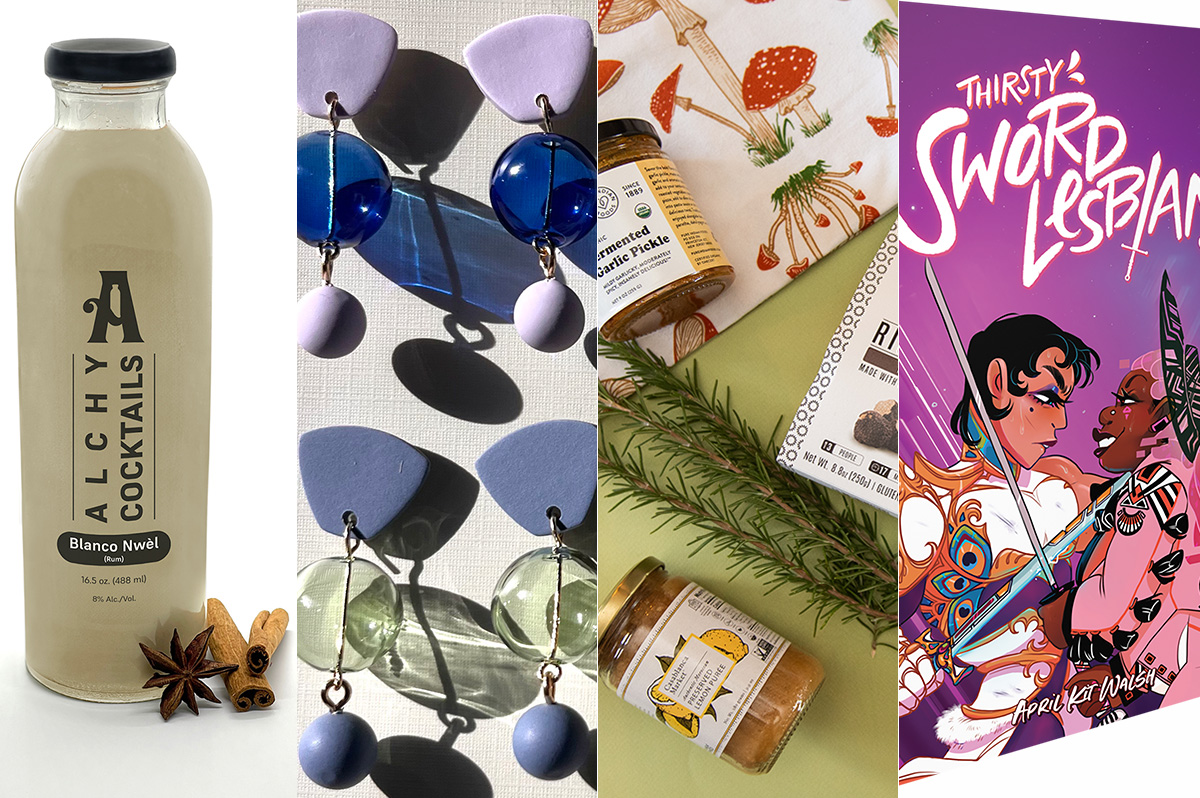
The DowntownDC Holiday Market is bustling. Union Station is decked out with its annual Christmas tree. Washingtonians have wrapped their houses and apartment balconies with festive lights and holiday decorations. The holiday season is here. And with stockings to fill and empty space under the tree, Washington’s local shops and artists have plenty to offer.
Show your LGBTQ and D.C. pride with the Washington Blade’s annual holiday gift guide.
To embrace the holiday buzz: The Blanco Nwèl cocktail from Alchy Cocktails. This Caribbean eggnog is one of Alchy Cocktail’s seasonal holiday cocktails. The flavor profile is similar to coquito, a traditional Puerto Rican Christmas drink with a coconut base. As a queer and Caribbean-owned business, Alchy Cocktails has been based out of Washington since 2021. Blanco Nwèl is available in both cocktail ($24) and mocktail ($12) online and at a variety of holiday markets, including the Tingey Plaza Holiday Market, the Flea Market at Eastern Market, Union Station’s Main Hall Holiday Market, and more. ($24)
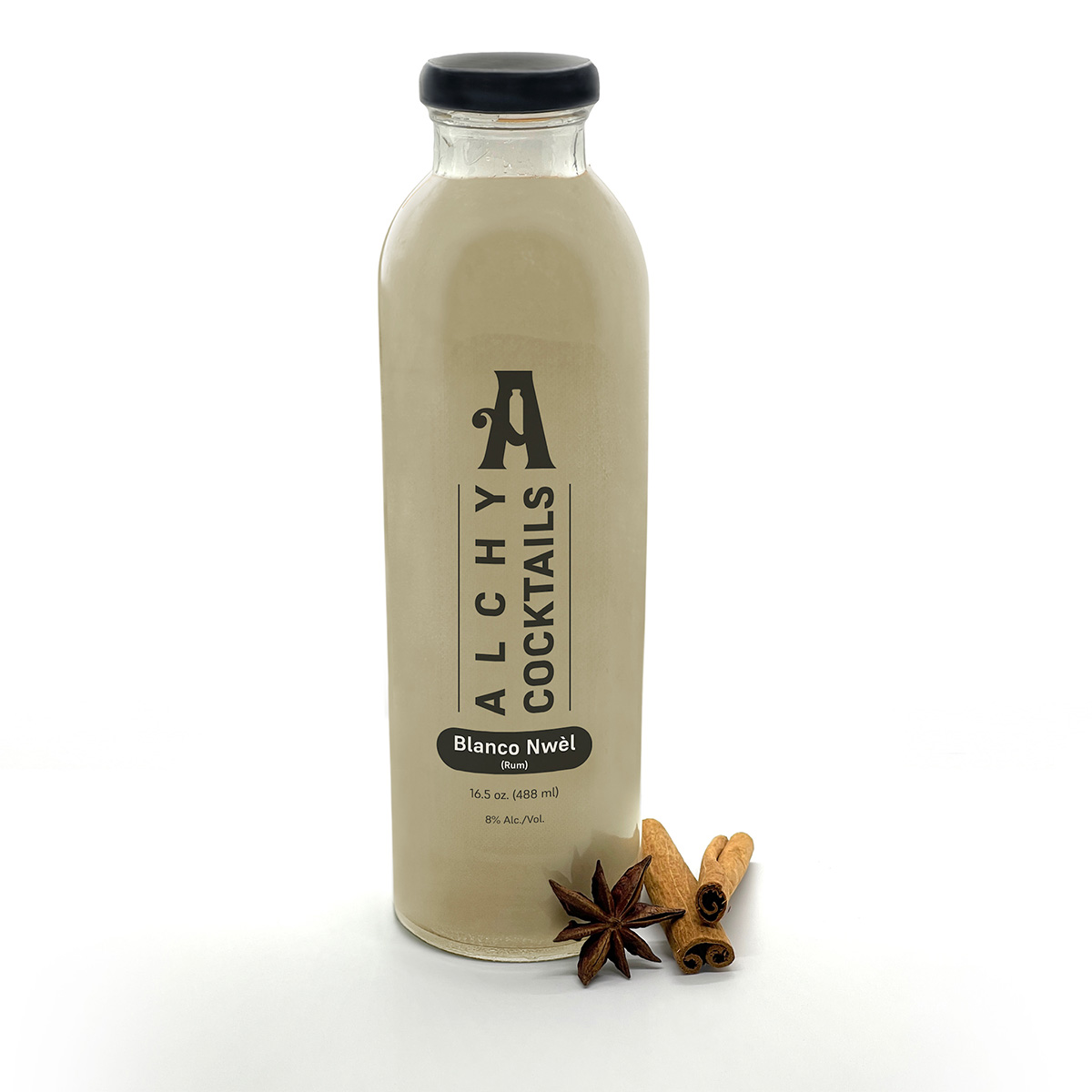
A spicy bite: Gordy’s Cajun Okra from Salt and Sundry. These spicy, tangy pickles pull on Southern Cajun-style flavors, packing a punch with paprika, cayenne, and more. Gordy’s is an LGBTQ-owned and Washington-based brand, making this gift an opportunity to support a local LGBTQ business straight from the jar. This pantry staple is available on Salt & Sundry’s website and at its locations in Union Market, Logan Circle, and its Georgetown holiday pop-up store. ($14)
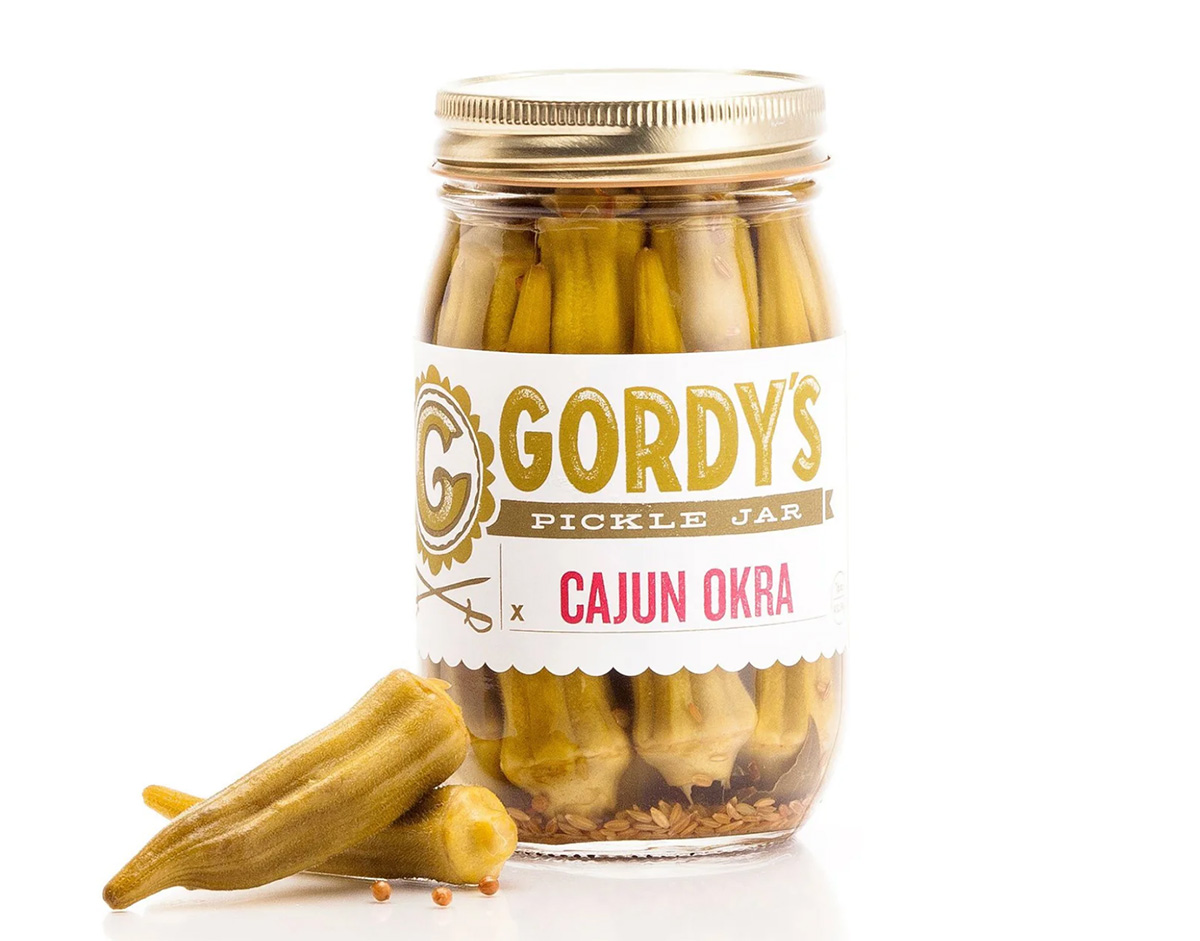

To celebrate Washington pride: The DC Landmark Tote Bag from The Neighborgoods. Native Washingtonians, visitors, friends and family alike will find something to love about this Washington-themed tote bag. Food trucks, the 9:30 Club, the Metro logo and pandas from the National Zoo are just some of the city’s landmarks depicted across the tote in a red, white, and blue color palette. The tote is a part of the DC Landmarks collection, which donates 10 percent of its sales to the American Civil Liberties Union. The Neighborgoods itself is a local, woman-owned business built out of a passion for screen-printing in 2013. The 100 percent cotton canvas tote is for sale online or at the DowntownDC Holiday Market. ($22)
To give friends and family their flowers: The Flowers Bandana from All Very Goods. This 100 percent cotton bandana was designed in Washington and hand printed in India. Its uniqueness comes in being covered with the faces of Black women, representing a “love letter to all women but especially Black women,” according to All Very Goods. The Black woman-owned and operated business, based out of Northwest Washington, has a mission to celebrate diversity and representation through its products. The bandana intends to give Black women their “flowers.” The Flowers bandana is available for purchase online. ($24)
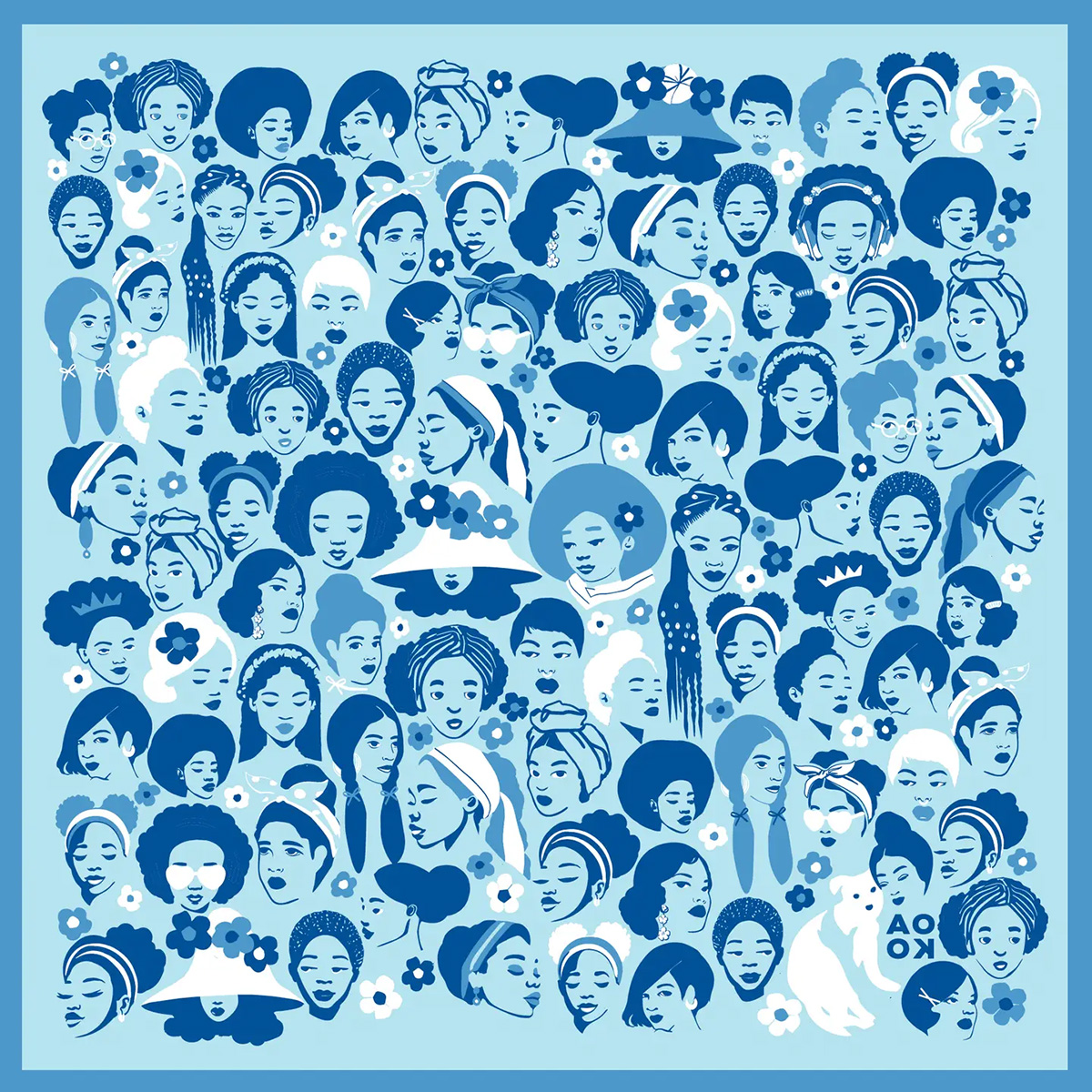
To unlock culinary creativity: The Curious Chef Gift Collection from Each Peach Market. This customizable collection of kitchen oddities — ranging from tinned fish to chili oil — is a quirky gift for the most inventive chefs. The collection is available in a Standard Santa, Extra Goodies and Super Holiday Size for up to $165. The Washington-based market, founded in 2013, permits customers to make the collection special by specifying what unique ingredients are packaged, including products made by local or LGBTQ brands. Each Peach Market offers assembly and pick up in-person at its Mount Pleasant shop and also offers local delivery and nationwide shipping via its website. ($85)
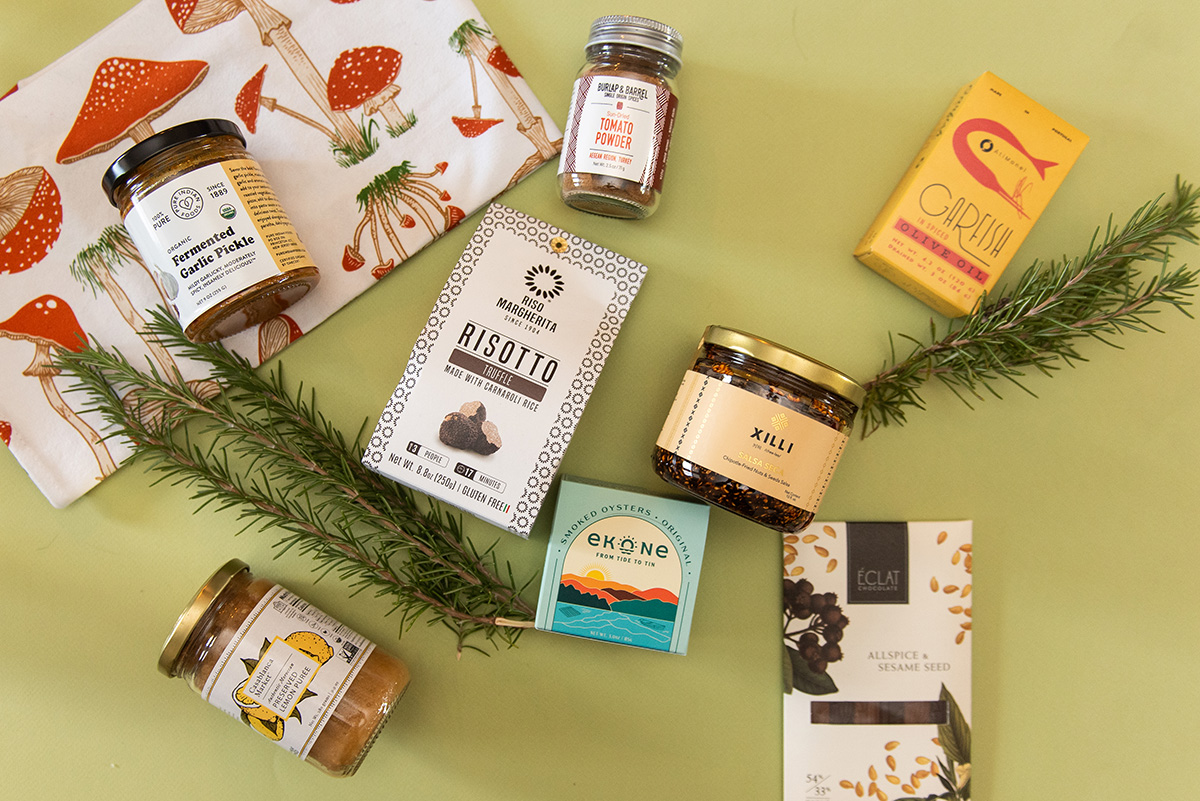
To give a touch of sweetness: The DC Landmark Chocolate Covered Oreo Holiday Cookies from Capital Candy Jar. Wrapped in a festive red bow, this box of nine cookies embraces love for Washington and the holiday season in one. Among the dark and milk chocolate covered cookies are images of the U.S. Capitol, the White House, the Lincoln Memorial, the Jefferson Memorial and festive hollies. The treat, packaged in a Hill East facility just a few blocks from the Capitol, is available for purchase online and at the DowntownDC Holiday Market. ($23.95)
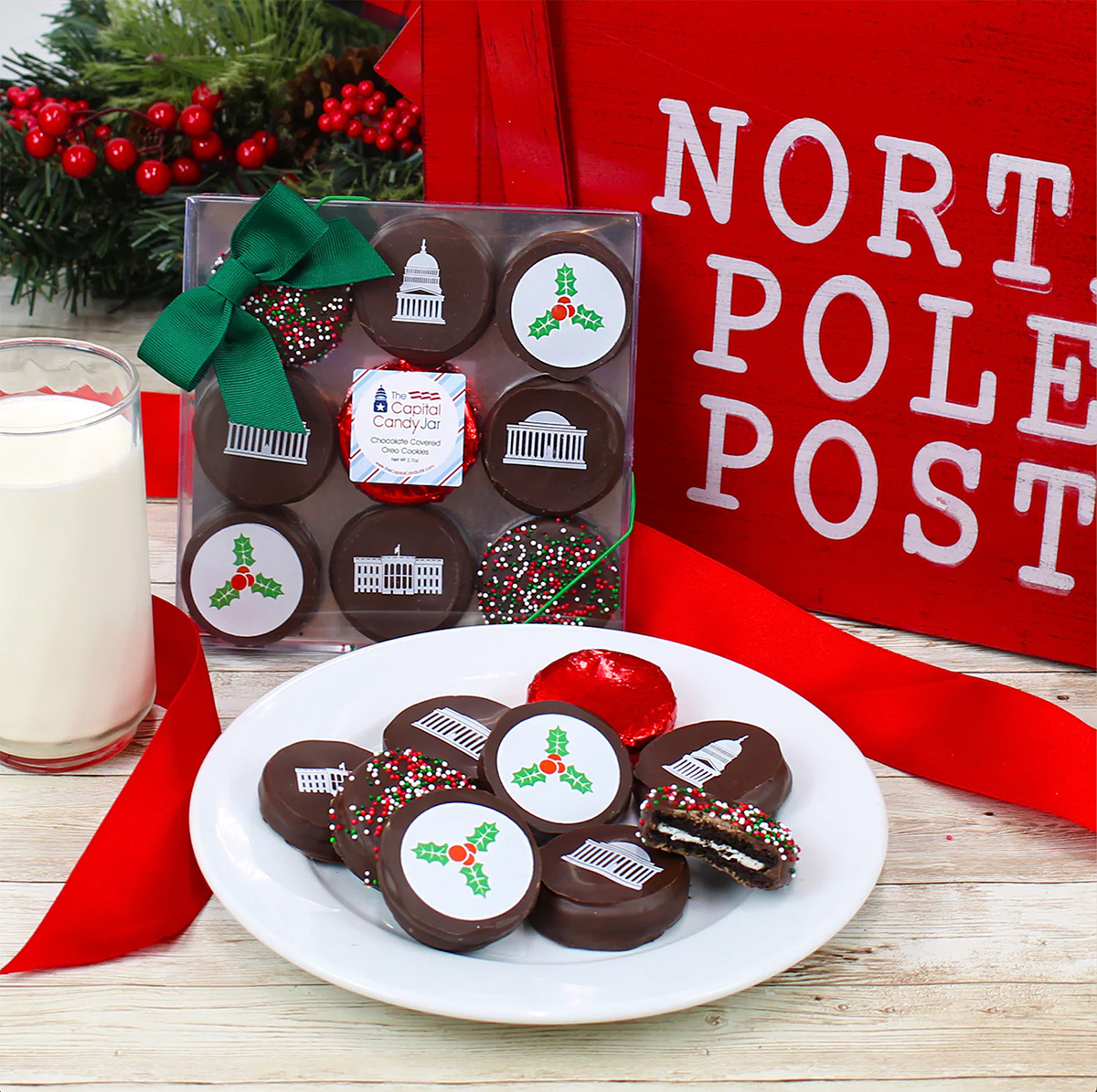
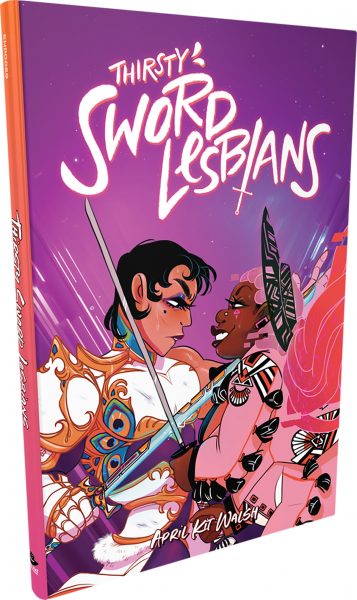
To celebrate queer gaming: Thirsty Sword Lesbians from Labyrinth Games & Puzzles. This roleplaying game embraces lesbian culture by unlocking a world of swords, romance, and battle. Ideal for group settings, the book presents a system of world building and character identities that are best brought to life by creative minds. Labyrinth, which has been a local Washington business for more than 15 years, celebrates non-digital fun through games and puzzles that connect the community. This gift is offered online and at Labyrinth’s Capitol Hill location. ($29.99)
To make a bold statement: The “Resist” T-shirt from Propper Topper. This locally screen-printed black tee features the Washington flag designed within a raised fist, symbolizing both Washington pride, and political resistance. The shirt is made exclusively by Propper Topper, a local Washington business that evolved from a hat shop to a gift store since opening in 1990. The tri-blend unisex shirt is available both for pickup at Propper Topper’s Cathedral Heights location and shipping via the online site. ($32)
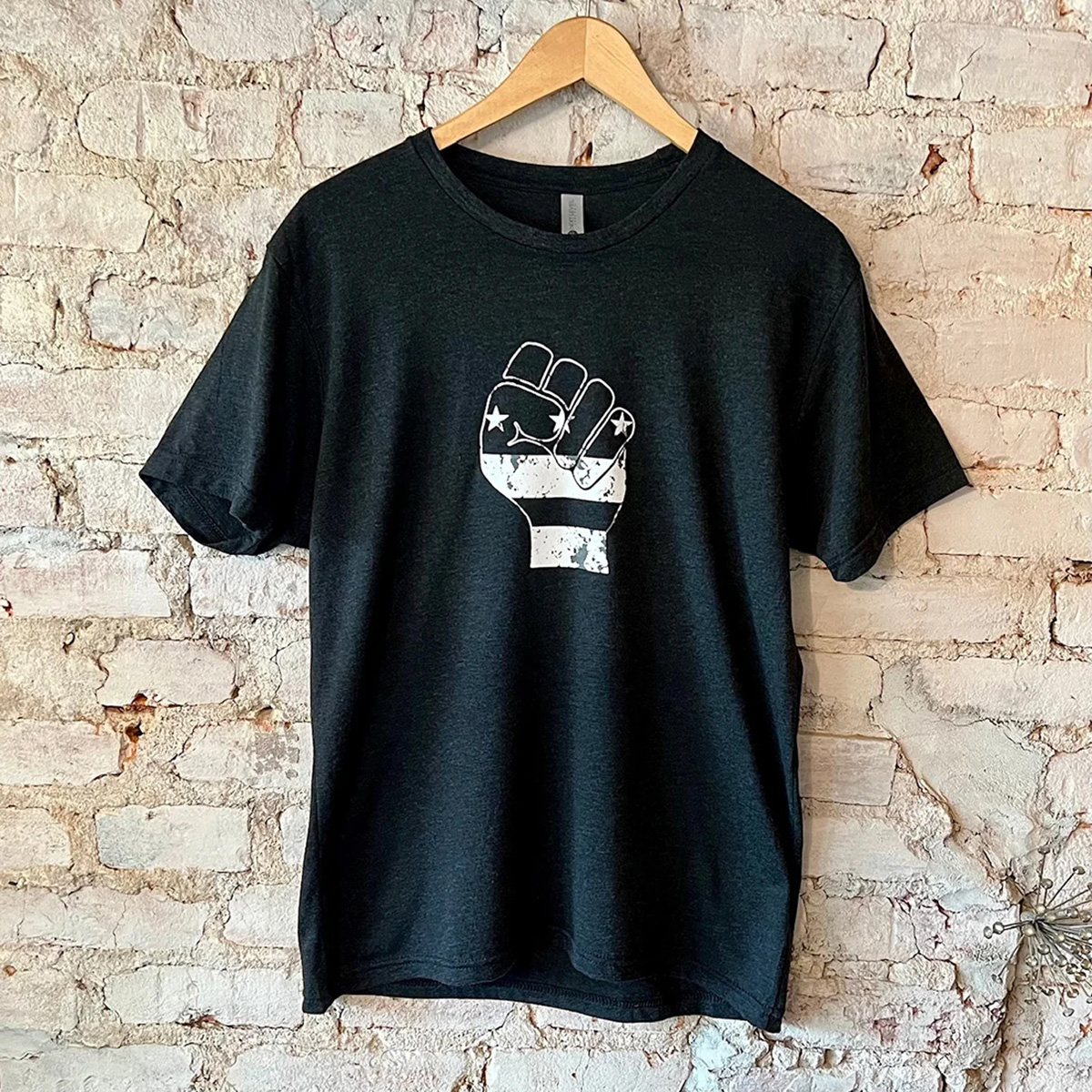
To keep it c(g)lassy: The Glass Ball earrings from Blue Moon Aquarius. Gifting can rarely go wrong when it comes to a new pair of earrings. The unique statement earrings — made of polymer clay, glass, and 18k gold plating over surgical steel — are hand cut, sanded and assembled in Washington, meaning each set is unique. Blue Moon Aquarius, a local brand, is known for its small batch jewelry and home decor designed with clay materials. Available in oxblood, hunter green, lavender, and bluestone color palettes, these earrings are available for purchase on Blue Moon Aquarius’ website and at the DowntownDC Holiday Market. ($48)
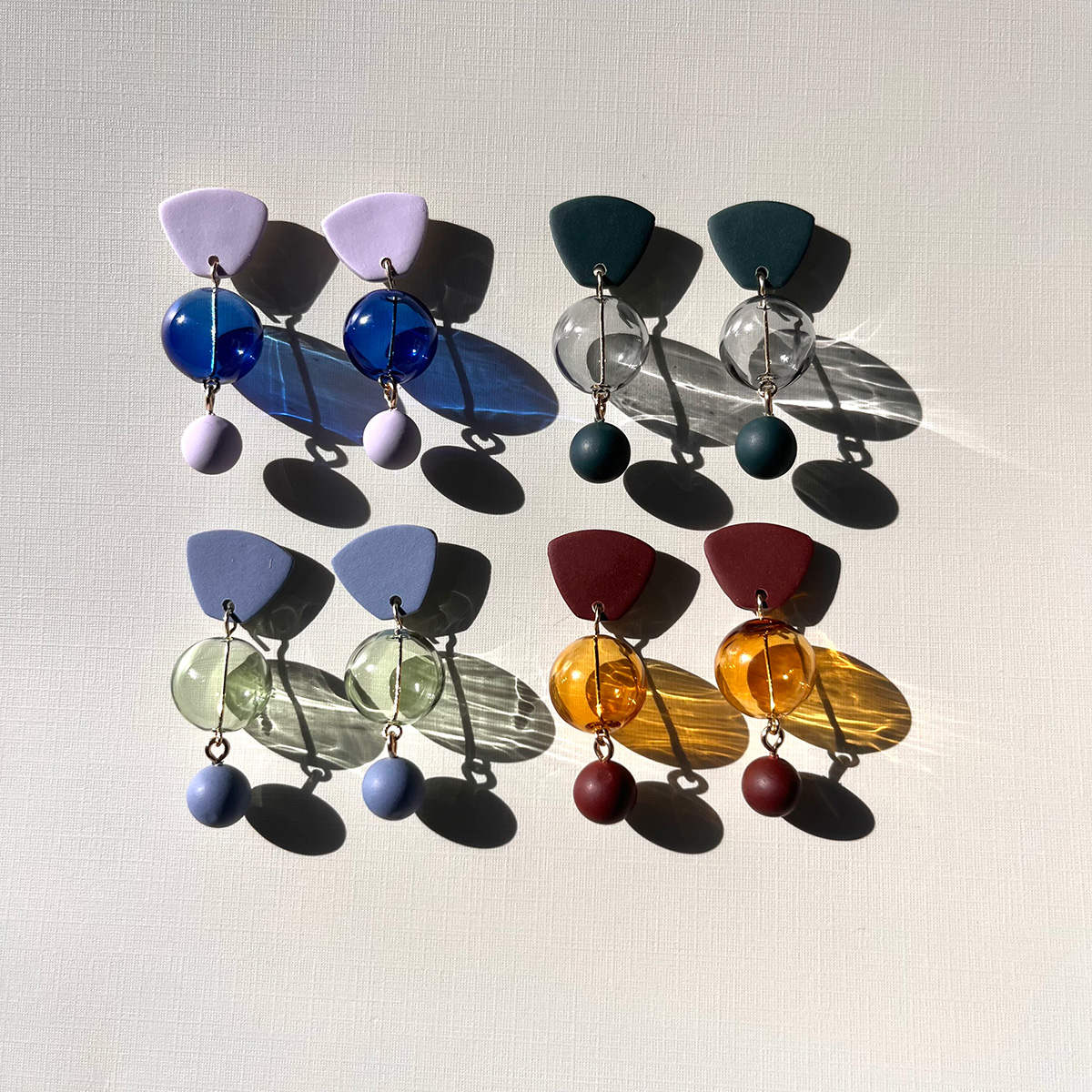
To elevate a holiday tea or charcuterie party: The Honey Flight: Tea Lover’s Selection from BannerBee. This local honey company presents the ideal gift to make cozying up with a cup of tea slightly more special. The Honey Flight contains three types of raw wildflower honey infused with fair trade Ugandan vanilla bean, chai spices, and locally sourced lemon thyme herb. The gift is also an opportunity to uplift a family company based in the Mid-Atlantic that offers all-natural, sustainable products. The flight is available online, at the DowntownDC Holiday Market or at the Arlington Courthouse and Dupont Farmers’ Markets. ($36)

For Baltimore shoppers: If you’re in Charm City, don’t miss Balston Mercantile, opened by a gay couple in June. Their gorgeous shop in the Hampden neighborhood offers an array of unique, upscale finds, from barware and artwork to cookbooks and home decor and more. (849 W. 36th St.)
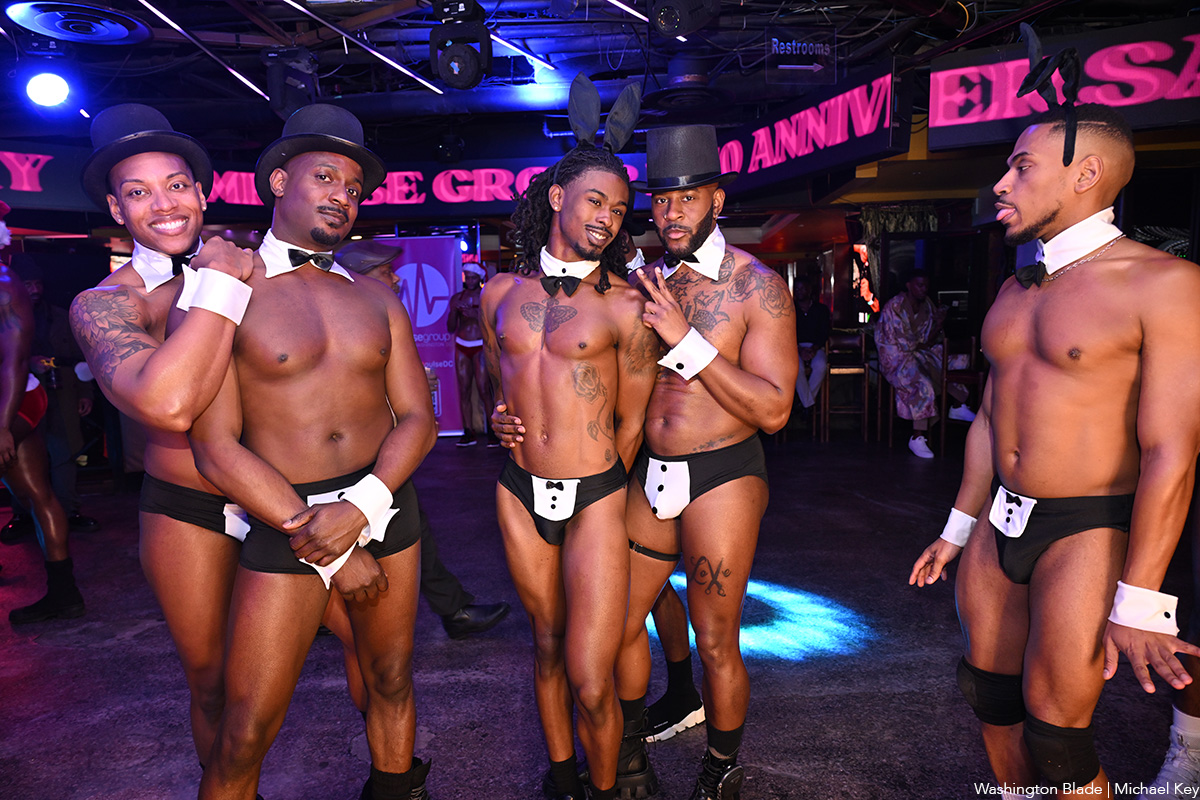
Impulse Group DC held “10’s Across the Board: A Celebration of 10 Years” at Bravo Bravo (1001 Connecticut Ave., N.W.) on Sunday, Dec. 14. Impulse Group DC is a volunteer-led 501(c)(3) and affinity group of AIDS Healthcare Foundation dedicated “to engaging, supporting, and connecting gay men” through culturally relevant health and advocacy work.
(Washington Blade photos by Michael Key)

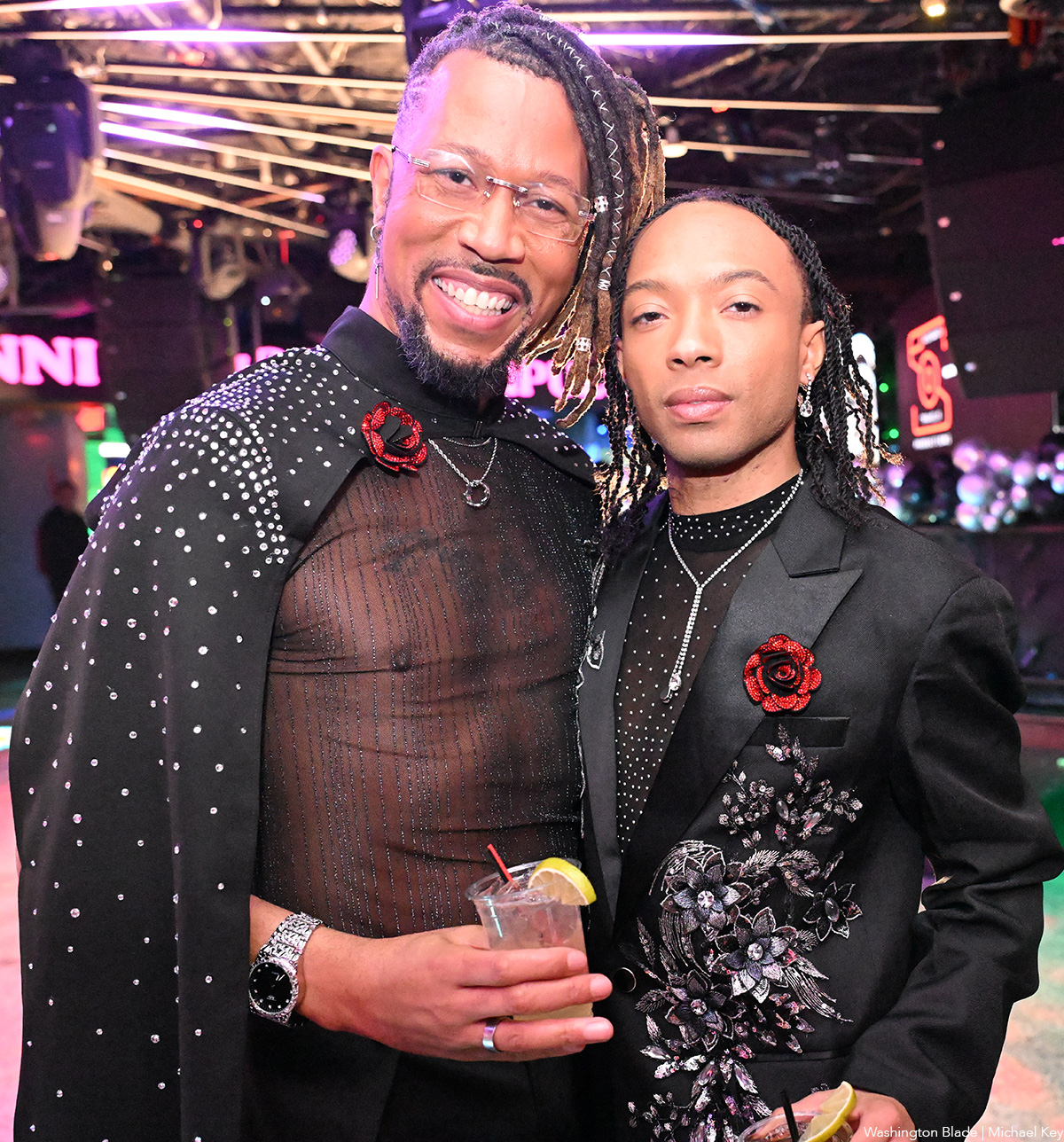
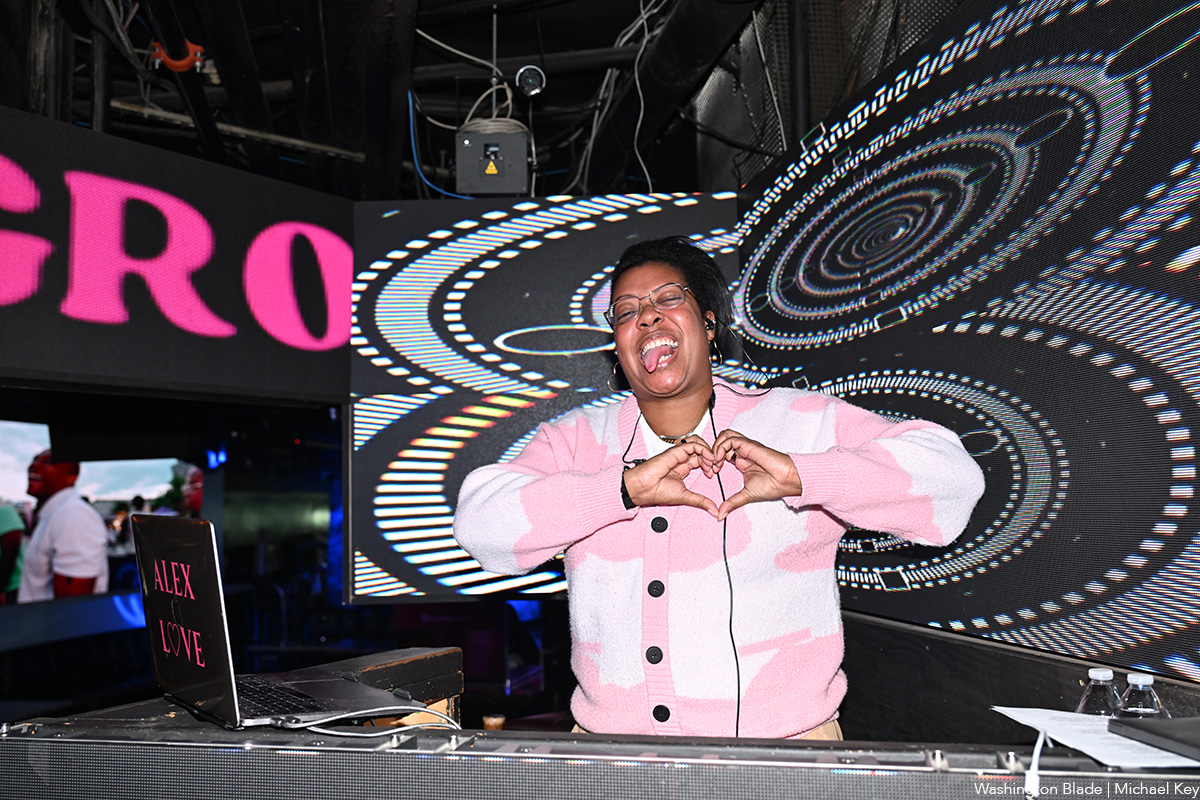
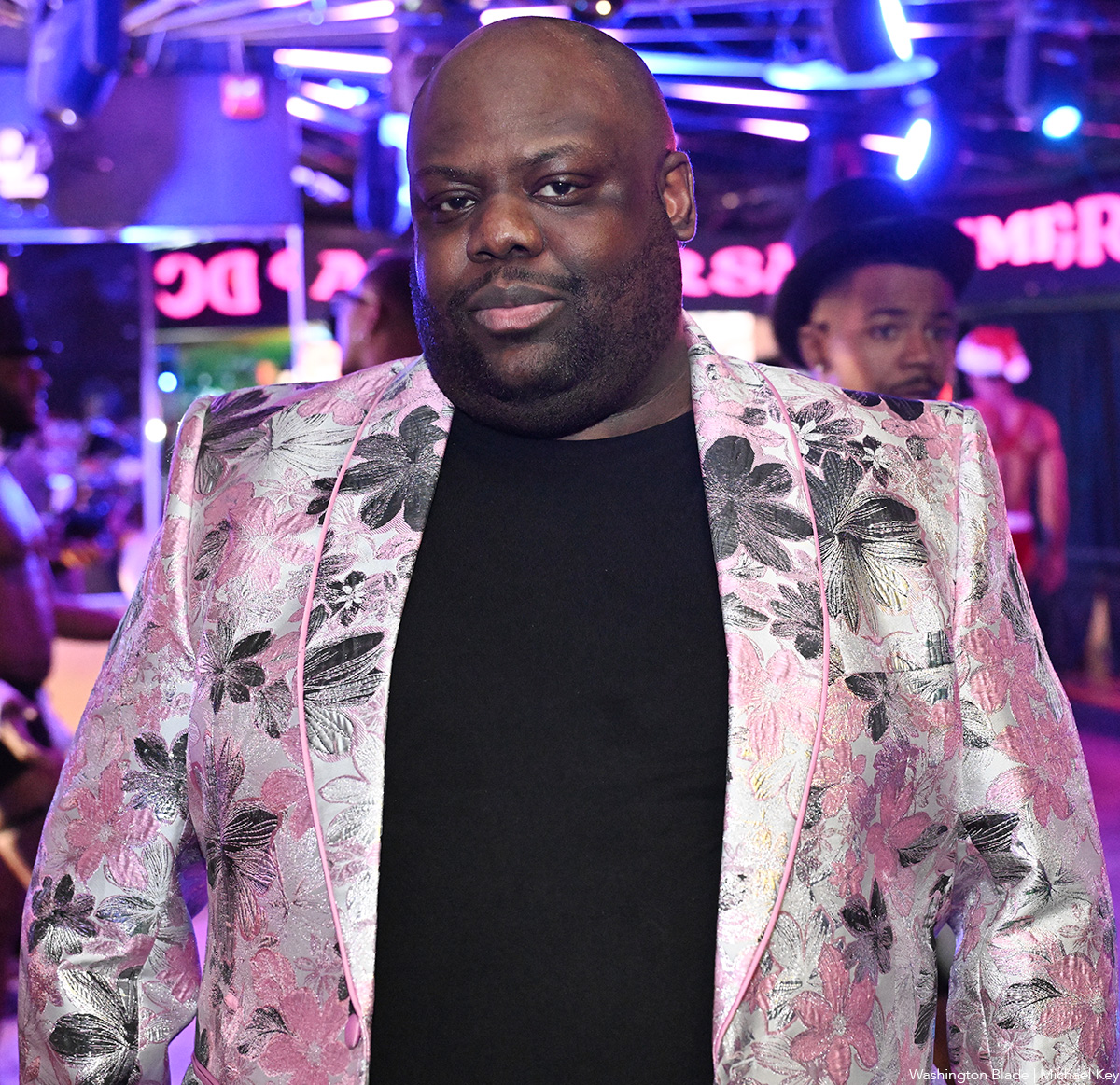
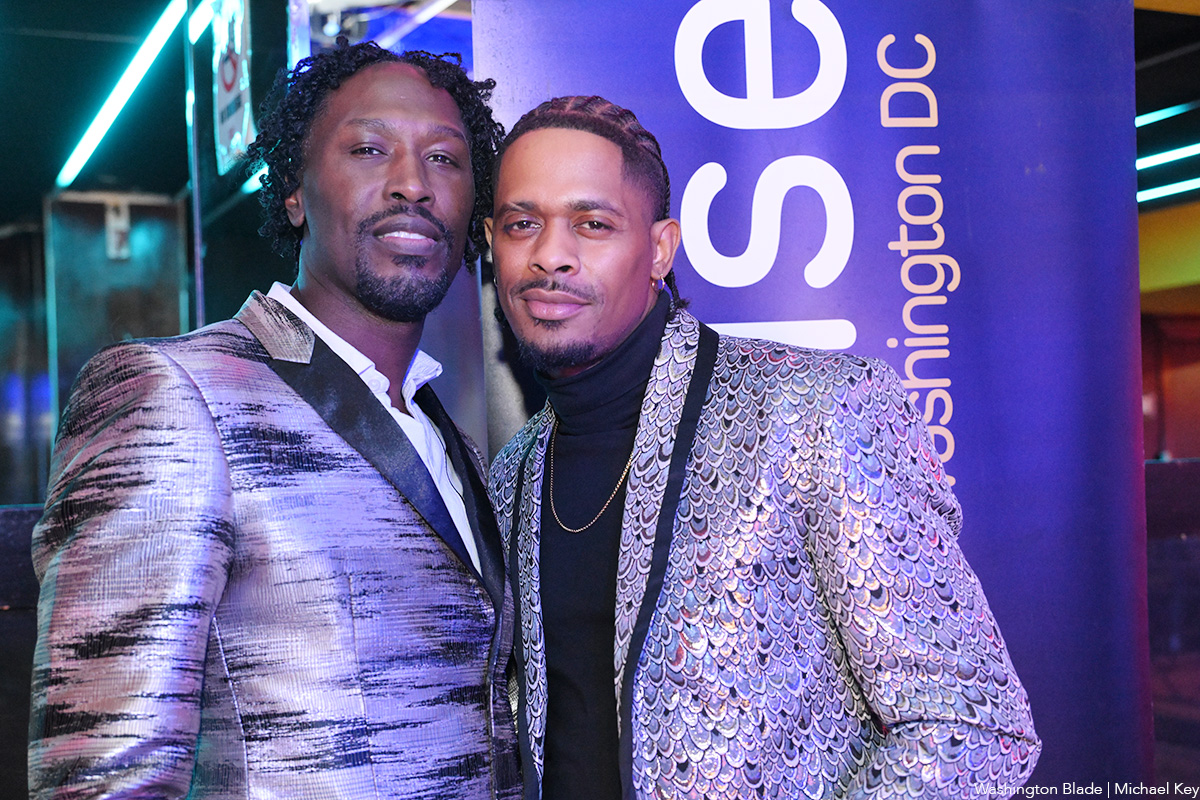
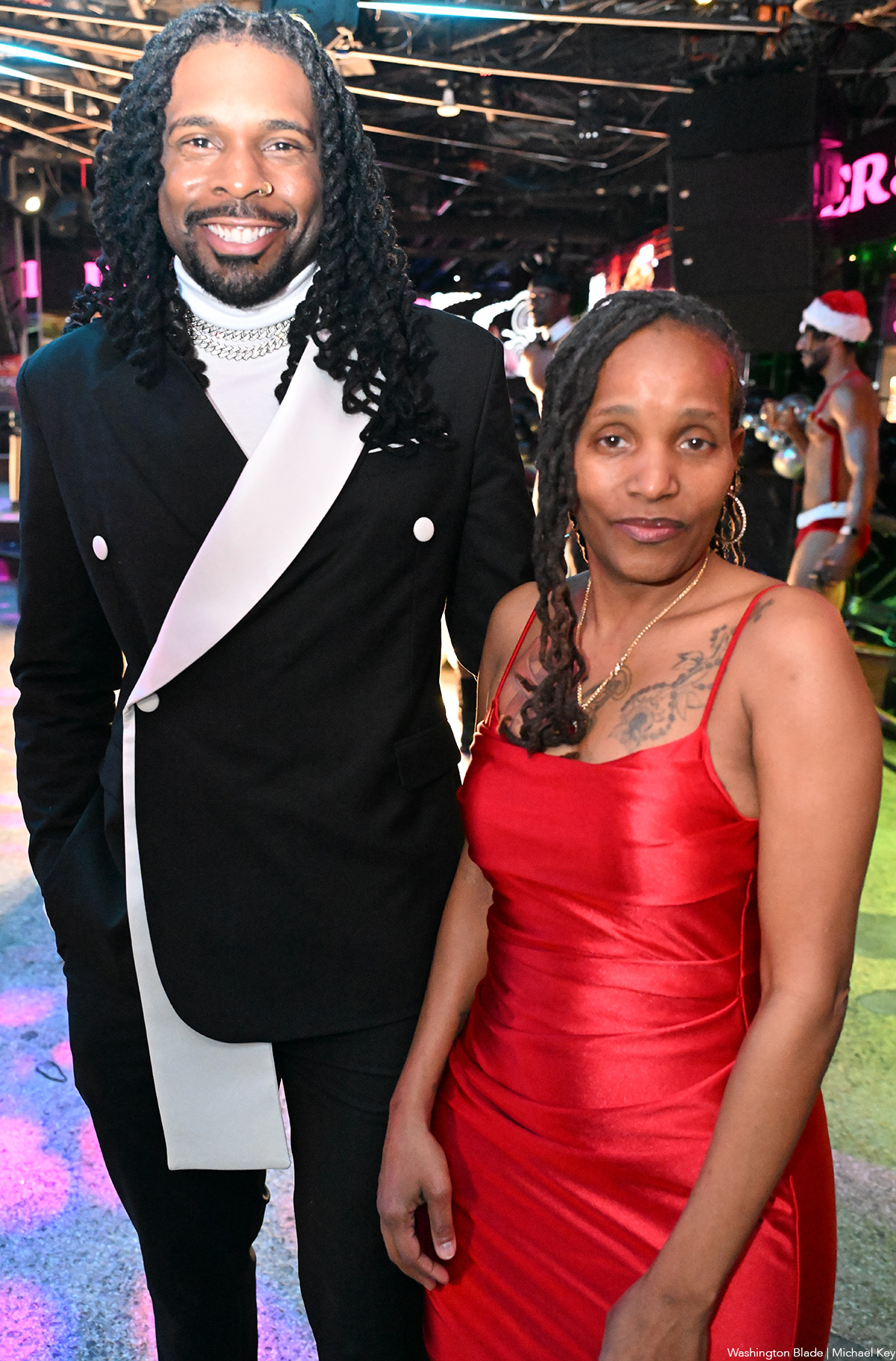
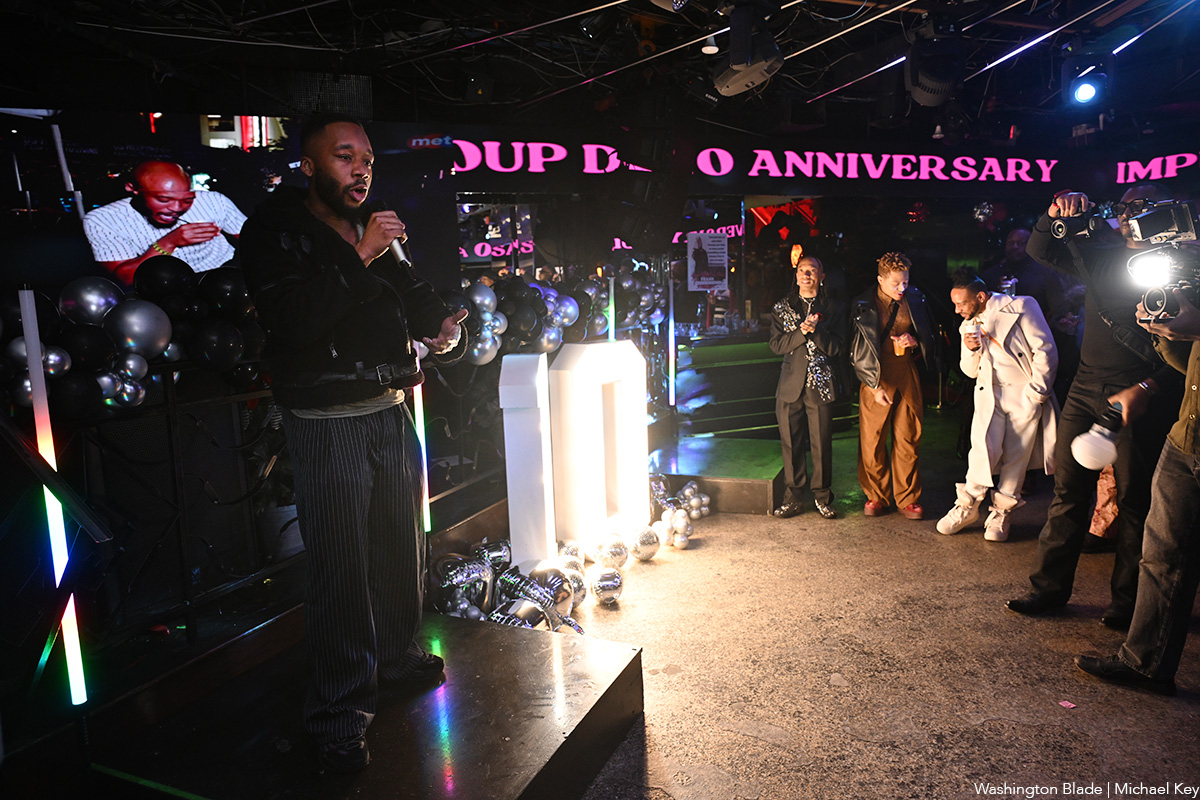
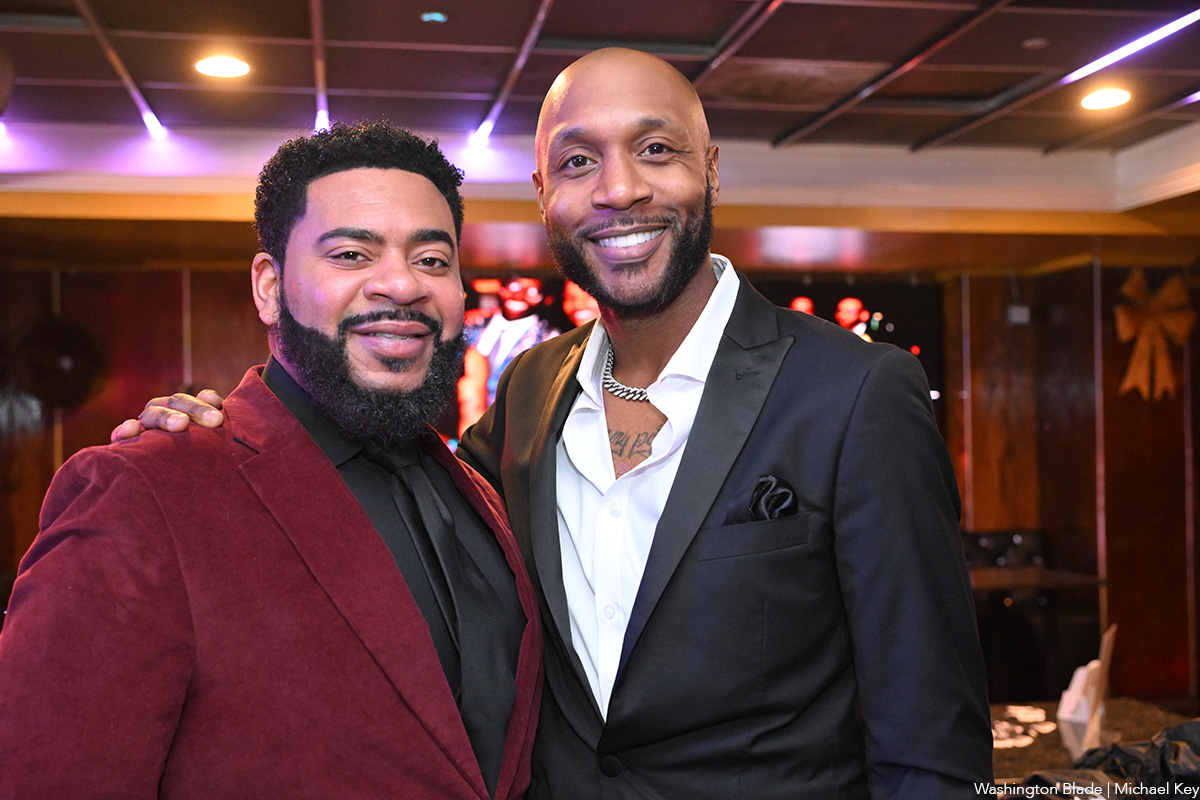
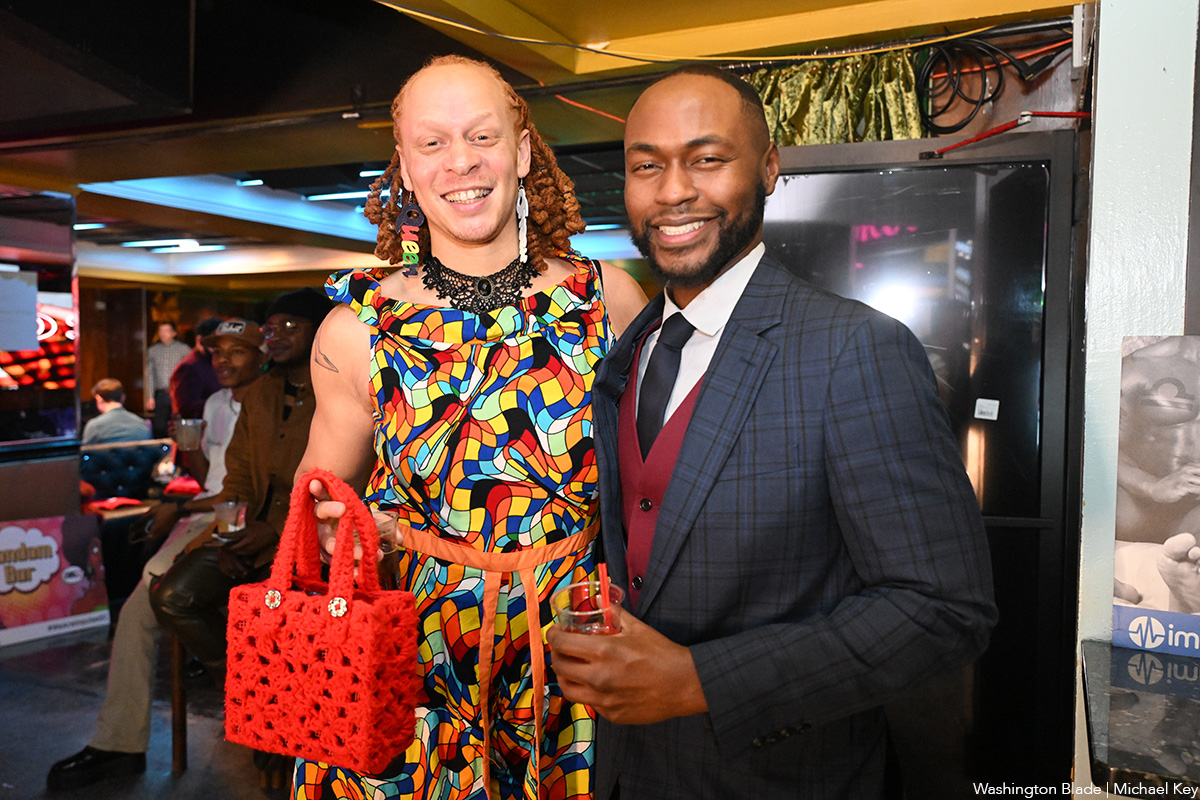
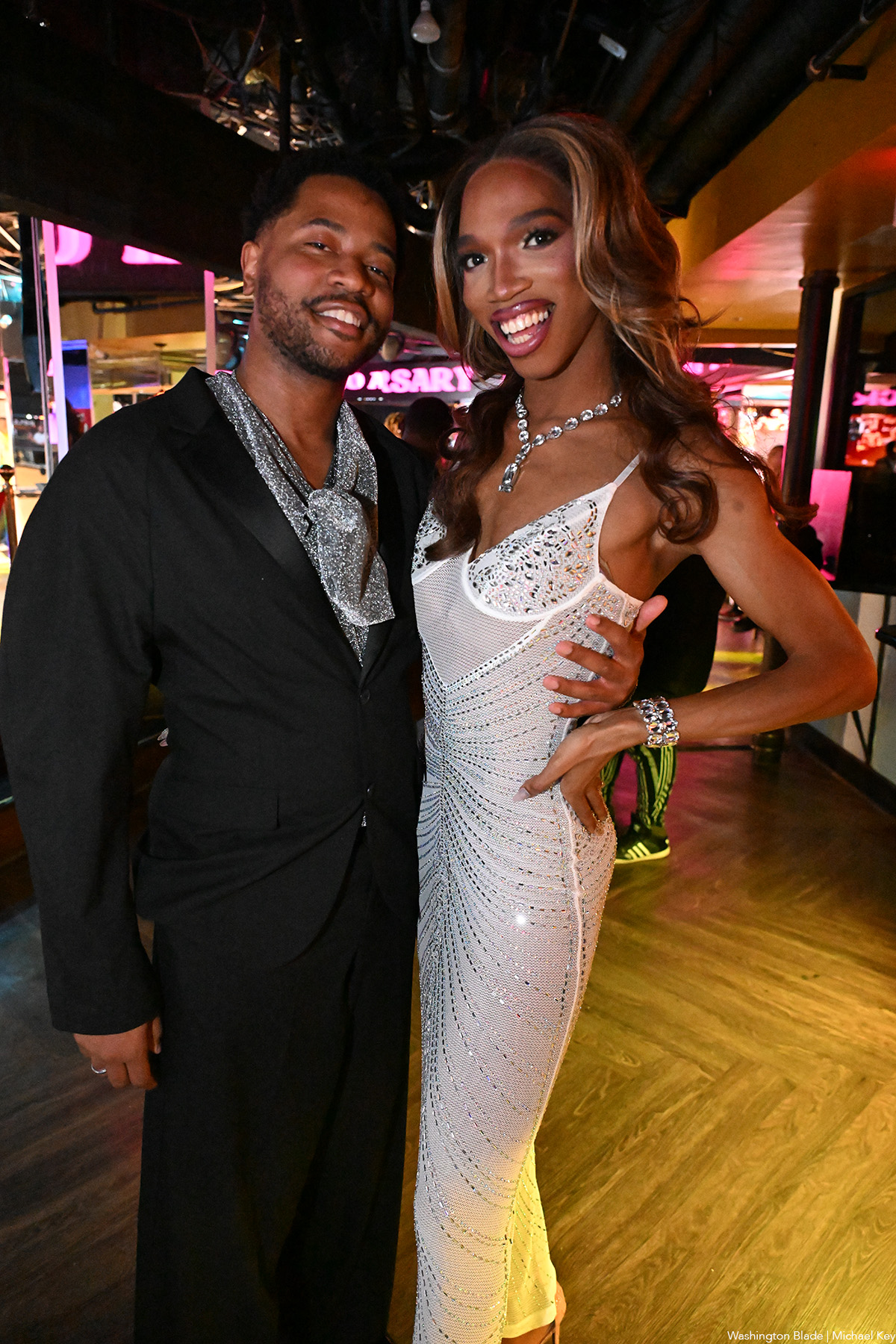
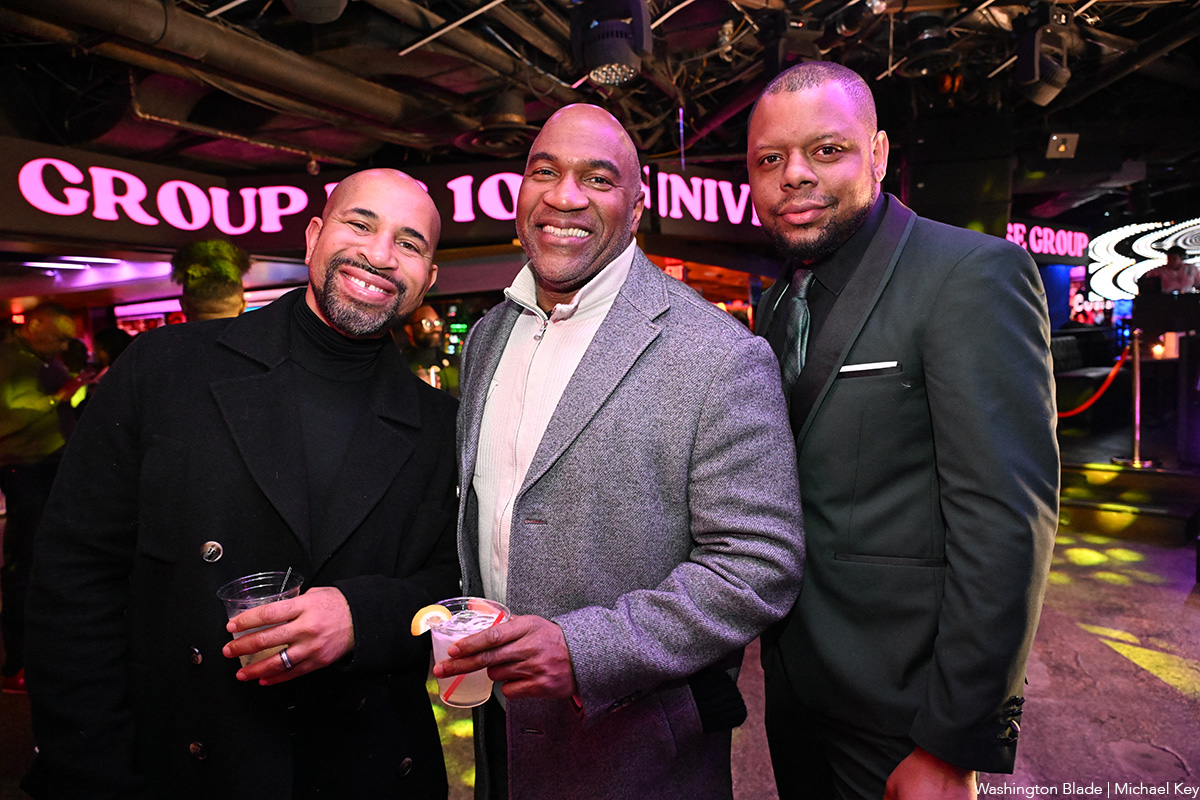
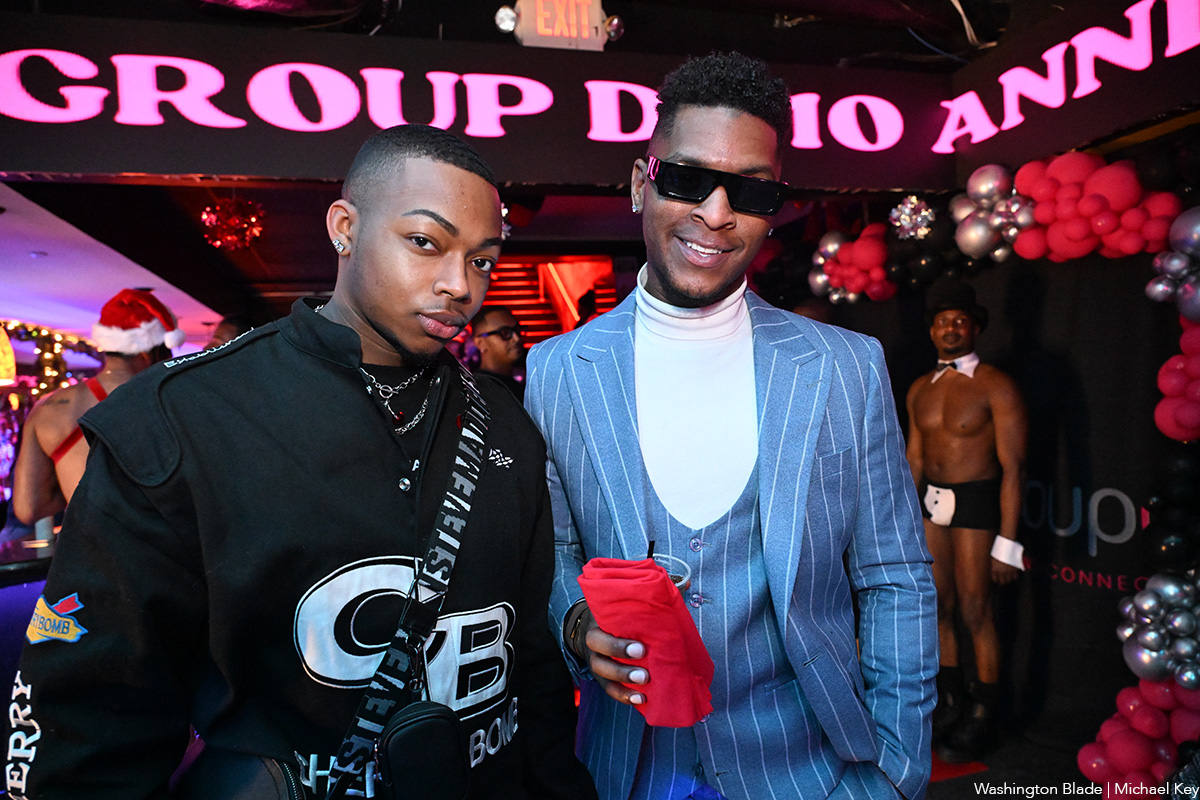
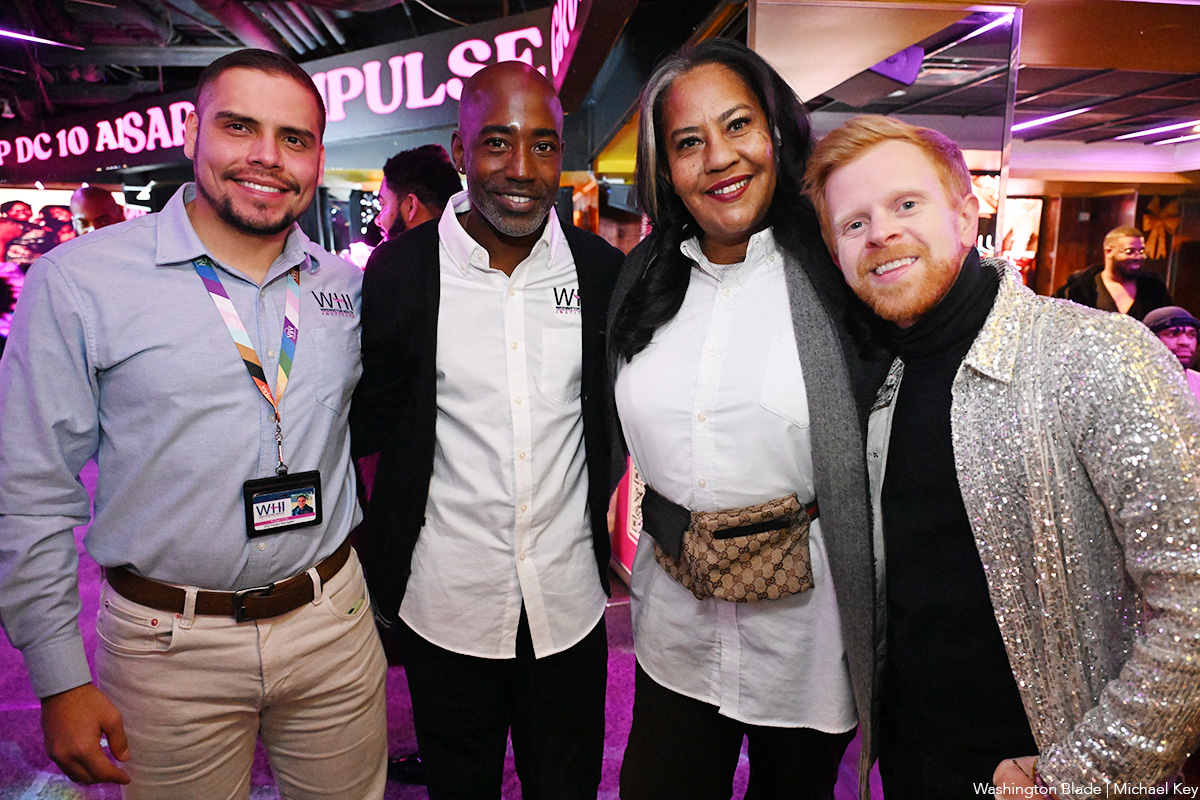
-

 District of Columbia5 days ago
District of Columbia5 days agoBrian Footer suspends campaign for Ward 1 D.C. Council seat
-

 Opinions4 days ago
Opinions4 days ago2026 elections will bring major changes to D.C. government
-

 Kazakhstan4 days ago
Kazakhstan4 days agoKazakh Senate approves anti-LGBTQ propaganda bill
-

 District of Columbia4 days ago
District of Columbia4 days agoNew queer bar Rush beset by troubles; liquor license suspended




















